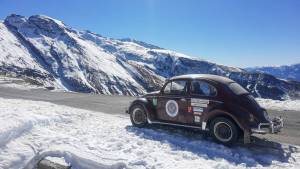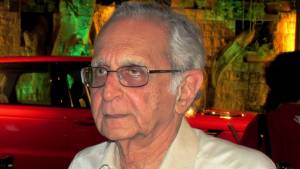Interview: FIVA President Tiddo Bresters talking about appointment of their Indian ANF and the historic car movement
On 29th April, 2020, FIVA appointed FHVI (Federation of Historic Vehicles of India) as its ANF (Authorised National Federation) for India. In each of the around 70 FIVA member countries, the ANF is the national FIVA member or organization that is authorized by FIVA to represent the interests of the vintage and classic vehicle community and to issue FIVA ID Cards, or a 'vehicle passport' confirming that the car or motorcycle is part of the world's motoring heritage.
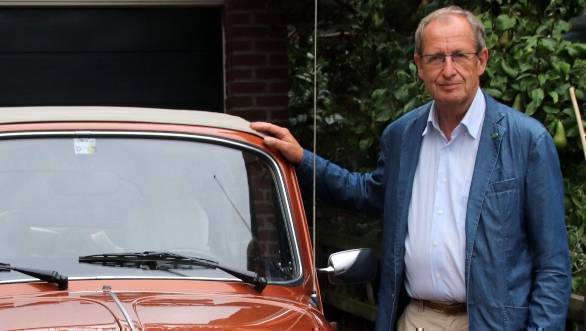 FIVA President Tiddo Bresters
FIVA President Tiddo Bresters
FIVA currently has two member organizations in India, FHVI and VCCFI (Vintage & Classic Car Federation of India), and for the next 3 years FHVI will be the FIVA ANF. This move has raised a lot of questions in the minds of Indian classic car collectors and enthusiasts, so, Bob Rupani spoke with FIVA President Tiddo Bresters to get the complete picture.
1) FIVA currently has two member organizations in India, FHVI (Federation of Historic Vehicles of India) and VCCFI. And FIVA just appointed FHVI as its ANF for India? Why FHVI and why not VCCFI?
The decision has been taken on the basis of an overall comparison of the two FIVA member organizations. Exactly the same set of questions were sent to both organizations, in order to get the feedback FIVA needed to come to an informed decision, so as to allow FIVA to balance the qualities the two organizations offer for carrying out the tasks of an ANF, and thus help fulfil FIVA's mission - Protection (advocacy of the interests of the historic vehicle movement), Preservation (capacity to issue FIVA ID Cards) and Promotion (organization or facilitation and monitoring of events).
The outcome of this careful process was that FIVA's General Committee sees FHVI as the organization that is best equipped to meet the challenges the future will bring to the historic vehicle movement in India, in the spirit of FIVA.
2) Earlier this year you were in India, when you personally met the heads of both FHVI and VCCFI. Did you try to get them both to work together and what was the response?
Indeed, I was in India in February, to get an impression of the Indian historic vehicle scene. On that occasion, I met, separately, VCCFI's Mr Nitin Dossa and FHVI's Dr Ravi Prakash. Both in Mumbai. To my regret, a joint meeting was not feasible. FIVA's ultimate goal, in India like anywhere else, is to have just one strong, united national federation in each of her now 70 member countries. In my conversation with them and other people, I noted there is an interest to join the forces, but the realization of something like this, I see as a matter of years, rather than months. Also, because FIVA needs an ANF for promoting and implementing our FIVA ID Card program we couldn't maintain a situation with no ANF. It should be noted again that FHVI's appointment is for 3 years, and that in this period a result-oriented effort for unity needs to be done.
3) What has been VCCFI's response to FIVA's decision and what will be your advice to them, and also to FHVI?
VCCFI should not interpret our decision as being set aside. It's unlike politics, where you have a ruling party and an opposition party. Or, maybe they see the ANF status as kind of title of honour. That is not the case, being a FIVA ANF brings along a lot of responsibilities and duties. VCCFI, as a FIVA member, still can contribute a lot to the historic vehicle community in India, like, they have done in the past.
FHVI is advised to make use of VCCFI's strengths, and I understand they already reached out to them.
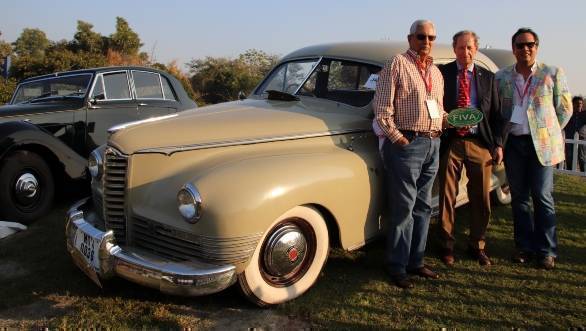 FIVA President presenting a prize
FIVA President presenting a prize
4) You have attended several classic car events in Delhi, Rajasthan and Mumbai. What are your impressions?
I was very impressed by the quality and variety of cars at the 21 Guns Salute Concours, and also I liked the venue very much, the Karma Lakelands Golf Resort near Gurgaon. The aspect that quite some of the cars have been restored in workshops in India and their craftsmanship really surprised me. The event flag-off at India Gate was another exciting element of the program. The drive from the heart of Delhi to the venue in Gurgaon, on board a Lanchester from the 1920s, in heavy highway traffic, contributed very much to keep this event in ever-lasting memory. I was happy I personally could handover the FIVA Best Preservation Award to the owners of a very nicely preserved 1947 Packard Deluxe Clipper, Mr Shahani.
As I am a passionate owner of a couple of air-cooled VWs, so it was a pleasure for me to take part, on the backseat of a VW Beetle Convertible in a VW Rally that started in Mumbai at the headquarters of the West India Automobile Association (WIAA)and finished at the premises of the Raymond garment and fashion factory in Thane. I had never expected to see so many VW Beetles in India. There was even a nice Karmann-Ghia Coupe. The hospitality and friendliness of the people I met was amazing. What made me happy too was to see so many young, enthusiastic people at the VW Event.
5) We in India have a vast mix of classic vehicles ranging from locally made Hindustan Ambassadors to the most exotic of custom-built Rolls-Royces, etc. Many are only enamoured by the more expensive brands, and do not give that much importance to Austins, Fords and so on. Your views please.
Until maybe 20 years ago, when seeing a picture of traffic from a town in India, one hardly saw anything else than Hindustan Ambassadors or, for Mumbai, Fiat Premiers. The few vehicles that are left certainly belong to India's motoring heritage. They should be cherished. Because everybody knows them. There is an amazing public memory and sympathy for vehicles that are well known and which have contributed so much to making the country more mobile. Therefore, they certainly should be very welcome at events in India, next to the fascinating prestigious vehicles with Maharaja backgrounds.
6) While most Indian cars are well restored in terms of the body, ornaments, upholstery, etc., not that much importance is given to the mechanicals as few collectors actually drive their cars regularly. In fact, many do not even clock 100 kms annually. Your views please?
I experienced that when I had the pleasure to take part in a tour from Bangalore to the Nandi Hills. The VW Beetle I was allowed to drive for a part of the route was not up to regular maintenance standards. Every vehicle is made for driving it, even the most expensive and exclusive ones. Unlike an Egyptian mummy in a museum an old car or motor cycle can be brought to life, only then it can be enjoyed with all senses. When there is a choice what to look after first, the "cosmetics" of the vehicle or the mechanical aspects, I believe the latter should always come first.
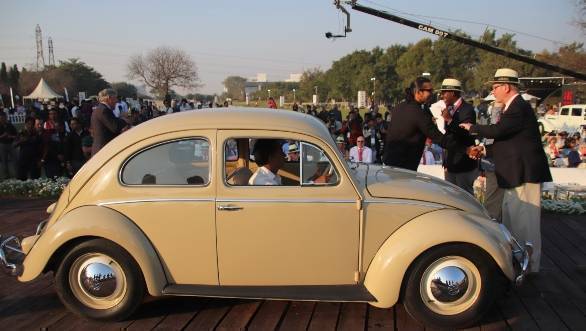
7) You were heading the Legislation Commission for 9 years, and, recently became FIVA President. Will there be any change in priorities and focus?
My predecessor Mr Patrick Rollet did a terrific job in the 6 years he was at the helm of FIVA. I must mention the very important partnership relation he helped to establish with UNESCO, and the strategic move to open FIVA membership to the professional players in the historic vehicle movement including businesses, media and museums. Of course, I will consolidate what has been built up in recent years. What I would also like to pay more attention to is stimulating the exchange with and between our members. Our members are our major asset, and increasing our efforts for sharing their expertise, best practices and services will be to everybody's benefit.
I also strongly believe that FIVA should become even more active and visible as the one and only global organisation that protects the right to drive historic vintage and classic vehicles on public roads. Even now, while the whole world is paralyzed by the COVID-19 crisis, policy makers are working on plans and measures for a zero-emissions society, which implies that fossil-fuelled vehicles will gradually disappear. I am keen on developing a compelling, universal message explaining the value of the historic vehicle movement for society. For this, we need the support of millennials and other young people. That is another area we will be exploring.
8) The COVID-19 has pressed the pause button in our lives. What challenges will the classic car movement face due to it?
Vintage and classic vehicle events are the core of the historic vehicle movement. All around the globe events have been cancelled or postponed. This, of course, can be real trouble for the professional organizers. Trade in vehicles also has been hit hard. We hope these businesses can survive with governmental aid. Quite a few of our member clubs have become involved in charity or other solidarity actions. Our short-term role in this crisis period is to share best practices for overcoming all the adverse effects of the lock-down measures and other restrictions. Once societies are re-started, the biggest question will be how the inevitable world recession will affect the movement.
Globally, the majority of historic vehicles are owned by middle class people. There is no sign yet that the interest in historic vehicle ownership is diminishing, but it is clear that the ever-increasing purchase prices will not be sustainable after COVID-19. So what will be left of the historic vehicle industry then, the thousands of companies that earn money from historic vehicle enthusiasts? There could also be a tendency to speed up climate change oriented policies. Therefore, FIVA and our clubs need to keep an eye on all such developments.
9) Older cars were much simpler and without sophisticated electronics or features. With the present global economic crisis, do you think auto manufacturers should also focus on simpler and hence more affordable cars for the near future?
It is not FIVA's role to have an opinion on the kind of vehicles manufacturers should bring to the market today. Of course the treasure of knowledge and expertise we represent can be helpful to remind manufacturers and policy makers that yesterday's solutions and designs are a rich source of inspiration for the vehicles for tomorrow's roads. Historic vehicles do the opposite as modern vehicles: they attract the general public more, and distract their drivers' less, because they entertain them without the need of infotainment on board.
10) The car industry is gradually moving away from fossil fuelled vehicles and climate change and the reduction in pollution during the COVID-19 lockdowns, will only speedup the change. What does this mean for the historic vehicle movement?
The challenge indeed is how to defend the right of using a combustion engine vehicle on public roads, especially when over time most vehicles will be "clean" and without any exhaust emissions. The solution is for society to preserve its heritage including the vehicles, which are symbols of their time, in terms of technique, design and socio-economic significance. The preservation of historic vehicles also brings together enthusiasts from all walks of life, and from all corners of a country and beyond. It is a very social activity based on the existence of thousands of clubs worldwide. There is no comparable "moving museum", and no other pieces of culture can so easily come everywhere and reach everybody. Bringing them on the roads delights both the owners and the countless admirers, and keeping them moving ensures they stay in safe working condition.
About FIVA - (the Fédération Internationale des Véhicules Anciens) - FIVA is the worldwide organisation dedicated to the preservation, protection and promotion of historic vehicles and related culture, as well as their safe use. Since April 2017, FIVA has been a non-governmental partner of UNESCO, and continues to pursue its successful FIVA World Motoring Heritage Year programme.
